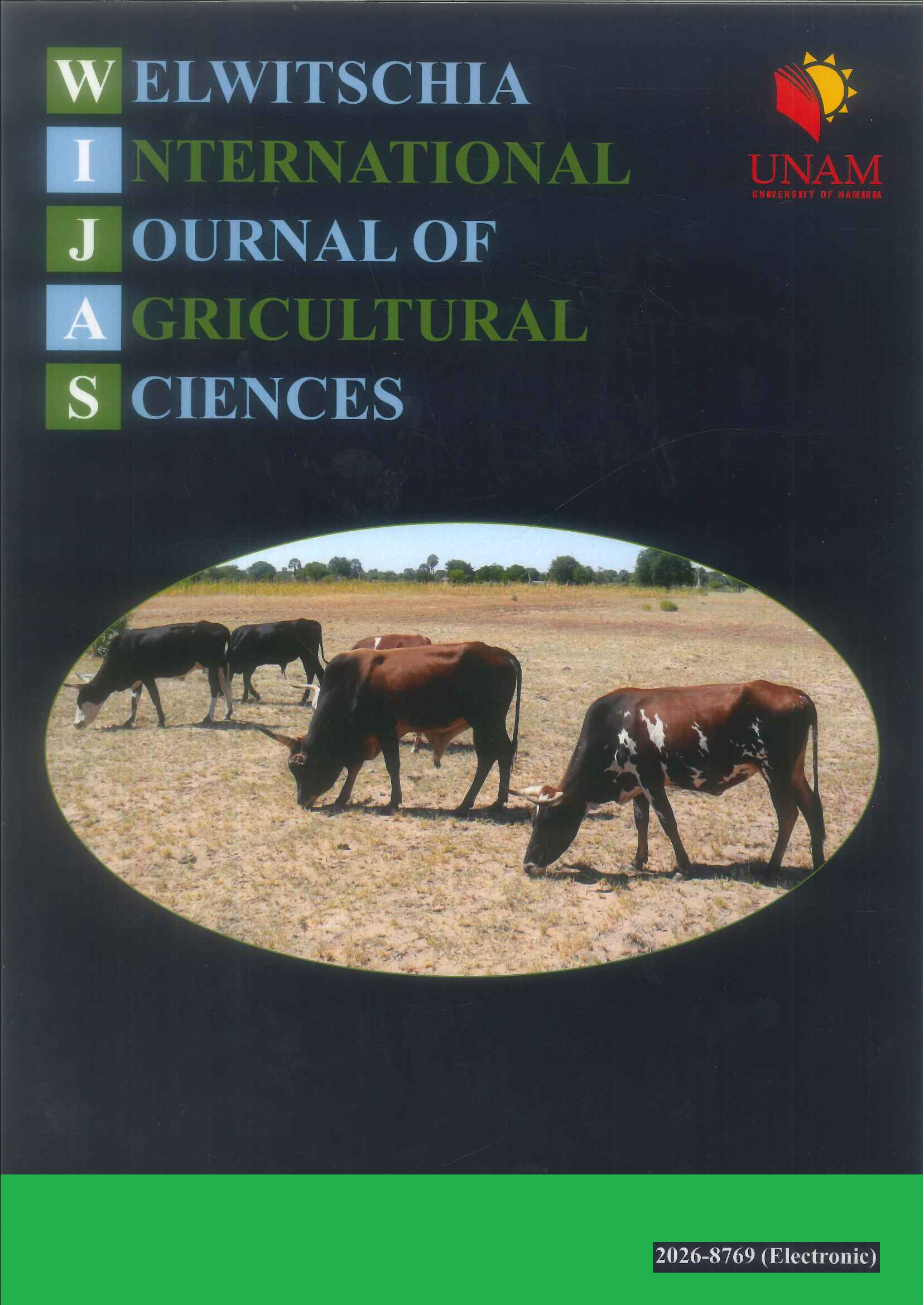Effect of legume hay supplementation on feed intake, growth, digestibility and volatile fatty acid production of Xhosa goats
DOI:
https://doi.org/10.32642/wijas.v3i.1459Keywords:
nutrient digestibility, small ruminants, forage legumes, rumen fermentationAbstract
Abstract
The objective of this study was to evaluate the effects of sex and supplementing Chloris gayana hay with either Lablab purpureus or Vigna unguiculata on growth, volatile fatty acid (VFA) production and apparent nutrient digestibility. Eighteen goats, one-year-old, of average live weight 14.13 ±0.24kg was apportioned in a completely randomized design to three diets which were iso-nitrogenous and iso-energetic. Animals were housed individually with 6 animals per treatment composed of three males and three females. Total DM intake was higher (P < 0.05) in T2 (694.8 g/head/day) and T3 (688.1 g/head/day) compared to T1 (607.8 g/head day). The goats gained at a rate of 35.0g/d; 45.0g/d and 38.3g/d for T1, T2, and T3, respectively. Goats on T2 showed a non-significantly higher (P > 0.05) growth rate exhibiting total gain of 2.68kg compared to 2.08kg and 2.33kg for T1 and T3, respectively. Animals on T1 (19.16) exhibited a significantly lower FCR (P < 0.05) than T2 (15.44) and T3 (18.11). Apparent DM digestibility were significantly different (P < 0.05) among treatment diets. Sex significantly influenced DM, ADF and NDF digestibilities (P < 0.05). There were no significant (P > 0.05) differences in individual VFA molar concentrations among treatment diets and due to sex for acetate, propionate, valerate, iso-butyrate and iso-valerate. However, diets significantly influenced butyrate concentration (P < 0.05) with 0.25, 0.95 and 0.25mM for T1, T2 and T3, respectively. The percentage molar concentration for acetate was 75%, 73%, and 77% while the propionate concentration was 12%, 8% and 10.7 % for T1, T2, and T3, respectively. The acetate to propionate ratio was 6.2, 9.12 and 7.15 for T1, T2, and T3, respectively. In conclusion, the study demonstrated that Cowpea and Lablab forages can support growth in goats at the same level of CP as in commercial pellets.
Downloads
Downloads
Published
How to Cite
Issue
Section
License
Copyright (c) 2021 John Mupangwa, Soul Washaya

This work is licensed under a Creative Commons Attribution-NonCommercial-NoDerivatives 4.0 International License.
The Welwitschia International Journal of Agricultural Sciences (WIJAS) is published under a Creative Commons Attribution 4.0 (CC BY 4.0) license. The license allows users to distribute, remix, adapt, and build upon the material in any medium or format, provided that attribution is given to the creator. The license also allows for commercial use. The WIJAS has migrated from a CC BY-NC 4.0 license to a CC BY 4.0 license to allow for further sharing and re-use of knowledge with no restrictions.

